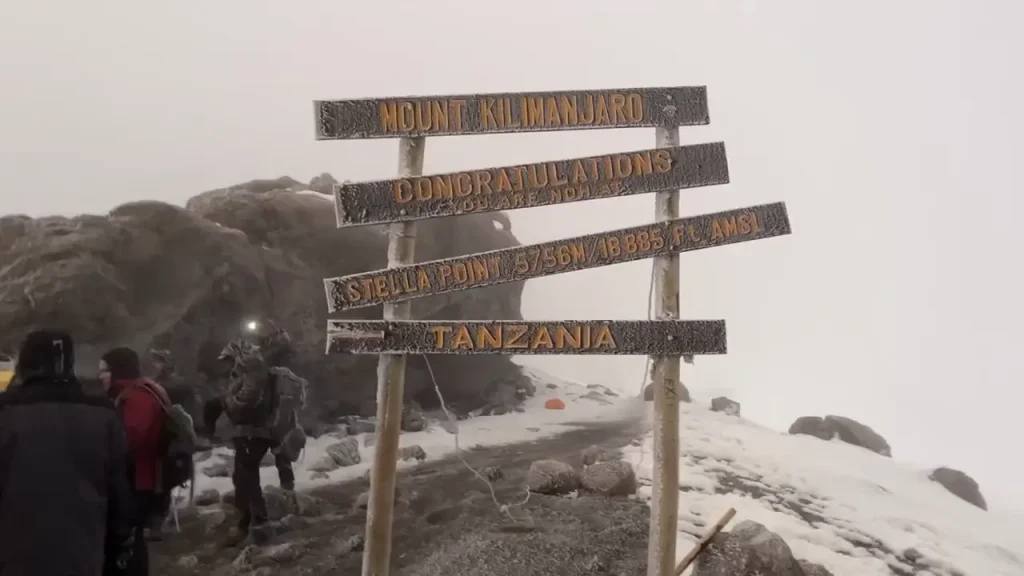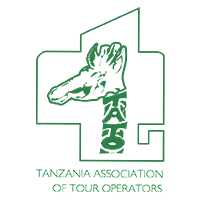Direct Booking?

Direct Booking?
If you are looking for a way to ultimately test of your stamina, determination and fortitude, the climb of Mount Kilimanjaro fits the bill, the trek to the top of this iconic mountain offers you a lifetime challenge. You should be prepared to walk unusually long distances through the pristine wildlife, spend nights under the blue sky in tents and virtually live in the wilderness. Our highly trained mountain guides will lead your way through the wild trails of Kilimanjaro all the way to the top in a safe and secure manner, taking care of all expedition arrangements.
To succeed in your endeavour, understanding physiological adaptation of your body to the abnormal altitudes of Kilimanjaro or any other mountain is extremely important. If the onslaught of Acute Mountain Sickness happens not even the most state-of-the-art equipment and the most accomplished guides will be able to make your dream of reaching the highest peak in Africa come true.
A deep Understanding of the principles of high-altitude acclimatization is very crucial in mountain climbing especially if you are a beginner.


Want to plan a memorable Tanzanian adventure?
Developing certain physiological adaptations of your body to survive in the decompressed environment with abnormally low levels of oxygen is part of acclimatization to the altitudes of Mount Kilimanjaro. Needless to say, such adaptation is absolutely important in mountaineering, some of the factors that might directly impact your adaptation include your fitness, good equipment, adequate supplies and professional crew. Essentially, a distinguished mountaineering company such as African Safaris Hub make all these arrangements to simplify the process of adaptation to the abnormal altitudes.
We all know from elementary physics that the higher you go, the lower barometric pressure becomes. For instance , at sea level it is about 760 mmHg, while at the highest peak of Mount Kilimanjaro (Uhuru 5,895 m) a barometer will show something between 350-352 mmHg, this means that the density of air is reduced twofold. Due to this, the pressure that keeps the molecules of oxygen together is substantially less. To simply put it, the distance between them increases, and therefore, a fewer number of oxygen molecules is inhaled with each breath, this leads to well-known discomfort symptoms.
If we assume majority of the world population live at the altitudes of less than 1000 m/3280 f above the sea level, saturation of oxygen in the their bodies is 100%. On a biological level, our blood cells are supposed to contain a certain ‘normal’ amount of oxygen molecules to make sure that our brain and other organs are supplied with this vital “fuel” to support our cognitive abilities and overall existence.
The number of oxygen molecules per breath become lower as you ascend higher. Thus, your bodily oxygen saturation decreases, resulting in the important physiological reactions.
The height of Mount Kilimanjaro is 5,895 m (19,340 f), and according to research the average blood oxygen saturation level of a human being at such altitude is roughly 70-80% . What this means is that, even though this reduction in oxygen level is definitely not critical, but it is however sufficient to cause extremely unpleasant experiences if high-altitude acclimatization rules are not followed to the letter.
At 5,895m (19,340f) Kilimanjaro is substantially below the ‘death zone’ of 8000 m. If you have properly acclimatized , you may definitely stay here a considerably long time.
At African Safaris Hub we have special crater camping tours, allowing you to explore the beauty of Uhuru peak and the surroundings in full.
To adapt to abnormal living conditions definitely causes some physiological distress in humans, this takes the forms of headache, nausea, loss of appetite and fatigue.
When our bodies are not used to living in an environment with reduced oxygen level, our brains start sending signals that something is going wrong, and that we should do something in order to restore the normal conditions of our biological existence. These signals are known as the symptoms of altitude acclimatization, according to medical point of view. The signals should not be ignored but taken very seriously, as it is them that inform you and your guide about your acclimatization progress.
Slight fatigue, nausea and light headache are symptoms of mild acclimatization. These symptoms may be relieved with medication which show that you have started to acclimatize. Although it may be irritating, it is normal and necessary. You will not necessarily have them, but if you do – worry not, as they will most likely disappear the next day.
Over the many years we have been operating Kilimanjaro climbs we have noted that many trekkers (actually, over 30%), particularly e, who decide the long Kilimanjaro climbing programs (over 8 days in duration) do feel only minor symptoms, or no symptoms at all as their bodies get adapted to the altitude. The process is almost unnoticeable to them.
As mentioned above, your brain starts sending signals that something is wrong, once you enter the zone of abnormal altitude, and the body’s defense system should be marshaled to ensure protection. The neurological system of humans is very sophisticated – it fathoms that for some reason we should continue ascending, and instead of ‘ordering’ the body to descend, it begins to prepare it for surviving in the decompressed atmosphere.
It is only when our brain senses that our bodies cannot develop new mechanisms and adaptations to cope with low oxygen levels – it signals that there is no other option, but to descend immediately (see ‘strong symptoms of AMS below).
Our bodies have four main techniques for getting adapted to the shortage of oxygen molecules in the air. thus, as you ascend , the following changes will likely take place in your body:
Breathing Intensely, frequently and deeply;
The number of the red blood cells grows as the blood structure slightly mutates, thus increasing their oxygen “carrying capacity”;
A certain amount of oxygen is released from haemoglobin into the blood;
In the lungs, inside human body, there are “reserve places” which are normally not used. When there is Increased pressure in the pulmonary capillaries “push” the blood there, helping the body to get more oxygen.
It is worth noting that these adaptations are not instantaneous. Thus, your body can definitely acclimatize to Kilimanjaro altitudes, yet it needs time to do so. The higher your climbing point is, the more time your body needs to acclimatize.
The height of Mount Kilimanjaro is 5,895 m (19,340 f), and according to research the average blood oxygen saturation level of a human being at such altitude is roughly 70-80% . What this means is that, even though this reduction in oxygen level is definitely not critical, but it is however sufficient to cause extremely unpleasant experiences if high-altitude acclimatization rules are not followed to the letter.
At 5,895m (19,340f) Kilimanjaro is substantially below the ‘death zone’ of 8000 m. If you have properly acclimatized , you may definitely stay here a considerably long time.
At African Safaris Hub we have special crater camping tours, allowing you to explore the beauty of Uhuru peak and the surroundings in full.
When it comes to calculating the time necessary for getting acclimatized to a certain altitude, there is no universal formula that can be applied. The time to acclimatize to the heights of Mt Kilimanjaro or any other mountain is very individual. Having said that, the fusion of our practice and the statistics show that the climbing programs with 7 and more days on the Mountain are marked with higher success rate than the 5 or 6-day ones.
It has also been noted that, acclimatization time is also different on different routes. Generally y, the steeper the route is – the more time for acclimatization will be required. For instance, success rate on Lemosho 6-day programs is much higher than on 6-day Umbwe route adventures. Our universal advice to all our prospective trekkers is to take longer programs in order to make your acclimatization transition smoother and less noticeable.
Based on the above information, we normally ask our trekkers to consider 7, 8 and 9-day climbing programs because of the altitude adaptation zone concept.
The concept of acclimatization zone refers to a certain altitude span, where you not feel the symptoms of altitude sickness.
First acclimatization zone for most people is 3000 m/9842 f – 3800/12467f. What this means is that having reached the lower point, and spending some time there, you will be comfortable staying within this range. In order for you to ascend higher, however, you will need to spend a night at 3700 m/12139 f in order to increase this span.
To broaden your acclimatization zone it will involve some discomfort, which will however,fade away over the time. For example, when you are taking the Lemosho route, you may start feeling small headache and nausea upon arrival to Mti Mkubwa Camp (3095 m/ 10155 f), this is quite natural. If you spend a night there, it will most likely reduce or be neutralized altogether, meaning that the body got accustomed to this zone.
The longer the itinerary you take – the more time your body has for broadening the borders of this zone, and the less discomfort you will experience in the course of acclimatization process. A longer climb itinerary means that you will be making small altitude gains each day leading to much less stressful for your body than if you make ‘elevation jumps’. As a result, you will feel much better, and your trekking experience will be a pleasant one. Thus, we highly recommend that you make your altitude acclimatization time as long it is necessary.
In order to make this process successful it is vital for you to follow these rules, In spite of the fact that your body has an in-built mechanism for adapting to high-altitudes:
To clearly illustrate the point – when you are on the 3rd day of your 7-day Lemosho route itinerary, to trek from Shira 1 Camp (3505 m/ 11499 f) to Shira 2 Camp (3900 m/12795 f). The gain in altitude is very significant, and you body is not ready yet for to spend an acclimatization night at Shira 2.
For you to boost altitude adaptation processes of your body and comfortable overnight stay at Shira 2, it is highly recommended that you acclimatize by trekking to a higher point on the way to Lava Tower, taking you to 4110 m/13484 m point. After reaching that point, you will then return to Shira 2 Camp for an overnight stay.
The positive impact of this hike is the enhancement of your acclimatization transition – Your bone marrow starts producing more red blood cells to transport more oxygen in anticipation of further altitude increases. The number of breaths goes up and become deeper. Your body is more than ready for spending a night at 3900 m/12795 f. Having made the “physiological preparations” for the Lava Tower altitude (4110 m/13484 m).
The importance of acclimatization hikes cannot be gainsaid as it tremendously increase your climbing success. Though it is not something you may look forward to (after a tiresome main daily walk from the first camp to the second one making another hiking endeavor may seem to be an unpleasant and unnecessary challenge), ignoring them may reduce your chances of progressing with your climb. Send the signal of the future altitude increases to your body – it will take care of the rest.
People who are diabetic or are allergic to sulphur drugs should NEVER TAKE DIAMOX. But we would like to add that if you have one of these conditions, this is not a reason to abandon your dream adventure.A longer climb programs (8/9days) with acclimatization day factored in will give your body more time for natural acclimatization.
We highly recommend 7/8/9 day climb programs, If you have not been to any other high-altitude (above 5,000 m) during the past three months.
If you are climbing for the first time, we recommend that you take a program that sticks to the “walk high – sleep low” idea, this means that during the day you climb to a higher point than where your overnight camp is located. If you are not travelling with African Safaris Bub – make sure that the itinerary given to you by your climb outfitter follows this principle.
Regardless of your fitness level, always remember to walk at a slow pace – Always avoid overexerting yourself. It is common for many people of ordinary fitness level reaching the summit successfully and without any distress, while professional athletes, who rush forward to show how tough they are, have been ultimately evacuated by the emergency service. Always remember climbing a mountain is not a competition, and there is no place for ‘who will reach the first’ bets here.
Dehydration at high altitudes is a big issue. Sometimes, when climbing a mountain, you may not feel thirst, but increased water intake is vital for your body there. We recommend a minimum of 3-4 litres per day is for an adult.
It is common to experience lack of appetite when climbing a mountain. However, you should be aware that the process of adaptation to a high altitude is very energy-consuming. Trekking is a strenuous activity that results in your body burning thousands of calories per day to support intensified breathing activity, the extra development of red blood cells and other vital biological processes. At African Safaris Hub, we make sure that our diet plans are specifically designed to make sure that your energy supplies are replenished in a timely manner.
You can take Diamox whenever offered by your mountain guide, however as mentioned above you should not be diabetic or allergic to sulphur drugs. It is advisable to check with your doctor whether it is okay to take Diamox before you attempt the climb. If you are okay to take the drug we recommend that you take it from the first day of your trek and two times per day. Ensure that you take it in the morning and before lunch. To spare you from midnight visits to the washroom, you should daily dose of 14:00, as Diamox is known to be diuretic
We kindly advise you to take seriously the advise of our mountain guide, even if you are an experienced medical practitioner with many years of emergency situations under your belt – unless you are an expert in high-altitude first aid, do trust your guide.Our climbing leaders have Wilderness First Responders certification, and they have been well-drilled to react to the climbing emergencies in a most effective and safest way. Ultimately, it is the guide who bears responsibility for your safe return. It may escape your attention, but it your guide who is always watching you – he will advise you on the best walking style, which medication to take, and also it is he, who decides that you should go down when he realizes that further climbing may endanger your life.
For proper preparation before you attempt any high altitude mountain, it is recommended that you take some workout classes and jogging whenever you have time. Good fitness level will help you to cope with challenges of high altitude climbing more easily.
You will definitely enjoy a memorable and fantastic adventure with little distress or discomfort, with these simple rules in mind.
At Climbing Kilimanjaro booking, we have very strict policies and standards Mountain guiding. We always endeavour to organize a safe and comfortable climbs. Our Trekking experts are always on duty to offer advise on how to climb successfully.
We ensure that our mountain guides undergo the necessary training and attain mandatory. All our mountain guides are Wilderness First Responders and Wilderness First Aid certificates holders. These are the most renowned expertise evaluation systems for outdoor guiding professionals.
During low season, in conjunction with relevant professionals, we always organize regular proficiency workshops and qualification master-classes for our guides. Our guides attend special training sessions at least after every 6 months. Renowned Expedition leaders from North America give lectures. Everyone has to pass a test upon completion
We organize intensive 2 year boot camp for all our chief and assistant guides. They have to undergo this training before we can consider them to lead our groups.
We understand that some tour operators provide oxygen bottles at extra fees, but at African Safaris Hub, all safety equipment including oxygen is included in all climbing price. We provide unlimited supply of oxygen- our guides monitor the consumption of oxygen and once they see that our supplies are about to end – we are always happy to organize an extra delivery.
In all our climbs we have an “ambulance” porter that carries medication for all emergencies, from simple flue to HACE and HAPE. We carry two health check- ups each day per client. We also use pulse oximeter to monitor oxygen saturation in client’s blood. We keep a special medical hard for each climber to record the daily health status, medication taken and other measures. Your health is of our most important concern.
We use custom designed Mountain Hardwear or North Face tents – the most recent advancements in mountaineering are available for the African Safaris Hub climbers.
We avail all these features not only to African Safaris Hub Trekkers but also to our support team that include the guides, the chefs and porters. It is also not uncommon for us to help other people on Kilimanjaro, who may need our help.
NOTE We want to make it clear that, the information below is not meant to scare you but to make sure that, we are taking all possible precautions to make sure that your stay within the acclimatization zone is enough before ascending further. You can rest assured that our mountain guide have been trained to react to any emergencies.
We feel we have the responsibility of letting you know what may happen, and why listening to the instructions of your mountain guide is necessary.
We have already stressed how important is to acclimatize. For the climbers who fail to properly acclimatize they may be exposed to a condition known as Acute Mountain Sickness or high-altitude sickness. When respiratory and cardiovascular systems are not ready for low oxygen saturation yet, the symptoms of AMS emerge.
In addition to guiding you on the mountain, the most important task of your guide is to regularly monitor you and determine whether the symptoms that you may experience are part of the signals of ongoing acclimatization transition, or the results of Acute Mountain Sickness. Small headaches and mild fatigue may show that your body is actively working on the adaptation, however, very strong pain and vomiting may signal that you are much above your acclimatization zone, and, as a result, you are already affected by AMS. By making some examinations and observations, your guide will make the final decision on whether you should finish your trek and go down.
Abnormal amounts of body fluids accumulated in the lungs leads to HAPE. This conditions effectively hinders the process of CO2 exchange and distribution through the blood vessels. HAPE is extremely dangerous, and evacuation is necessary in all HAPE cases.
The symptoms of HAPE include physical exhaustion, difficulty in breathing in, coughing with white, foamy fluids and unreasonable behavior (sometimes).
When the guides have confirmed that you are indeed suffering from HAPE, their first reaction would be to attach an oxygen mask to administer relieving medication. Then, evacuation will follow with use of special stretchers start. Upon descent, professional medical advice is necessary.
When the fluids accumulate on the brain tissues, it swells and this leads to a condition called HACE, needless to say all HACE cases require immediate evacuation.
The most common symptoms of HACE include Fainting, clouded consciousness, excruciating headache, exhaustion and poor coordination are the most common symptoms of HACE . This condition mainly occurs at night. Our highly and skilled mountain guides are trained to diagnose the earliest stages of HACE development, but you are strongly advised to report any suspicions you may have to your guide so that necessary action may be taken.
These notes provide the main insights into high altitude acclimatization only. Contact our Trekking specialists at info@kilimanjarobooking.com for more high altitude trekking tips.




Tailor Made your Trekking

2024/2025 >> Click Here

